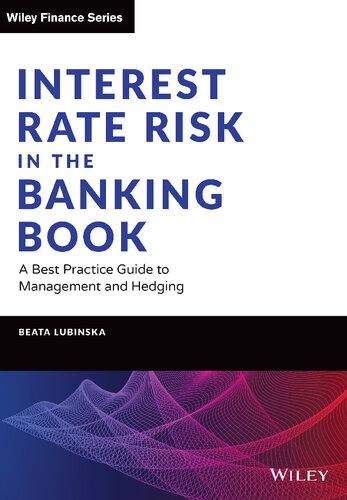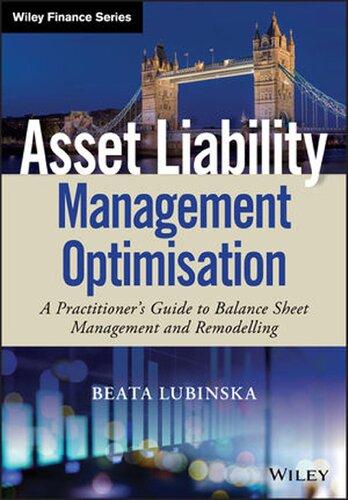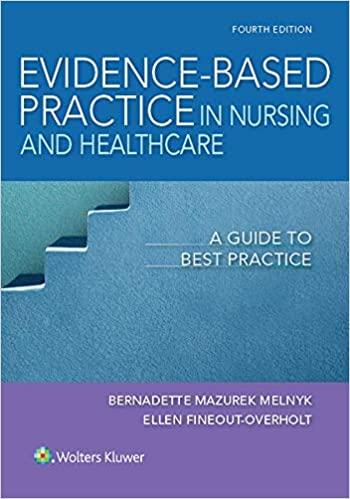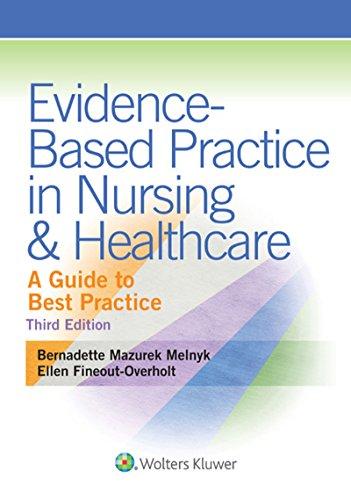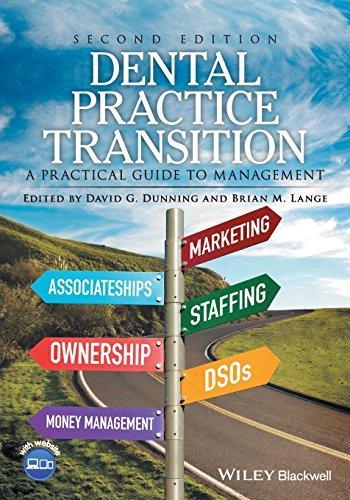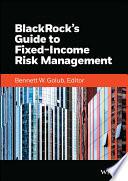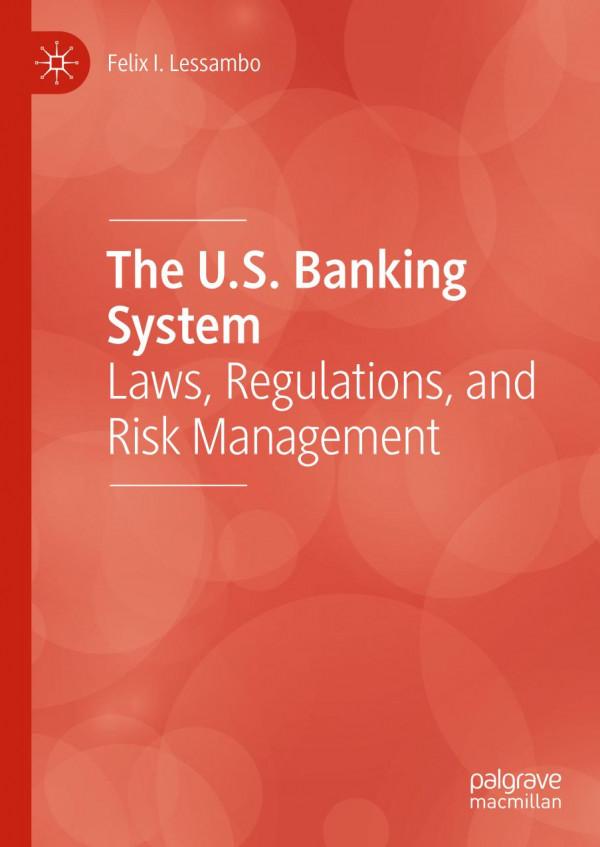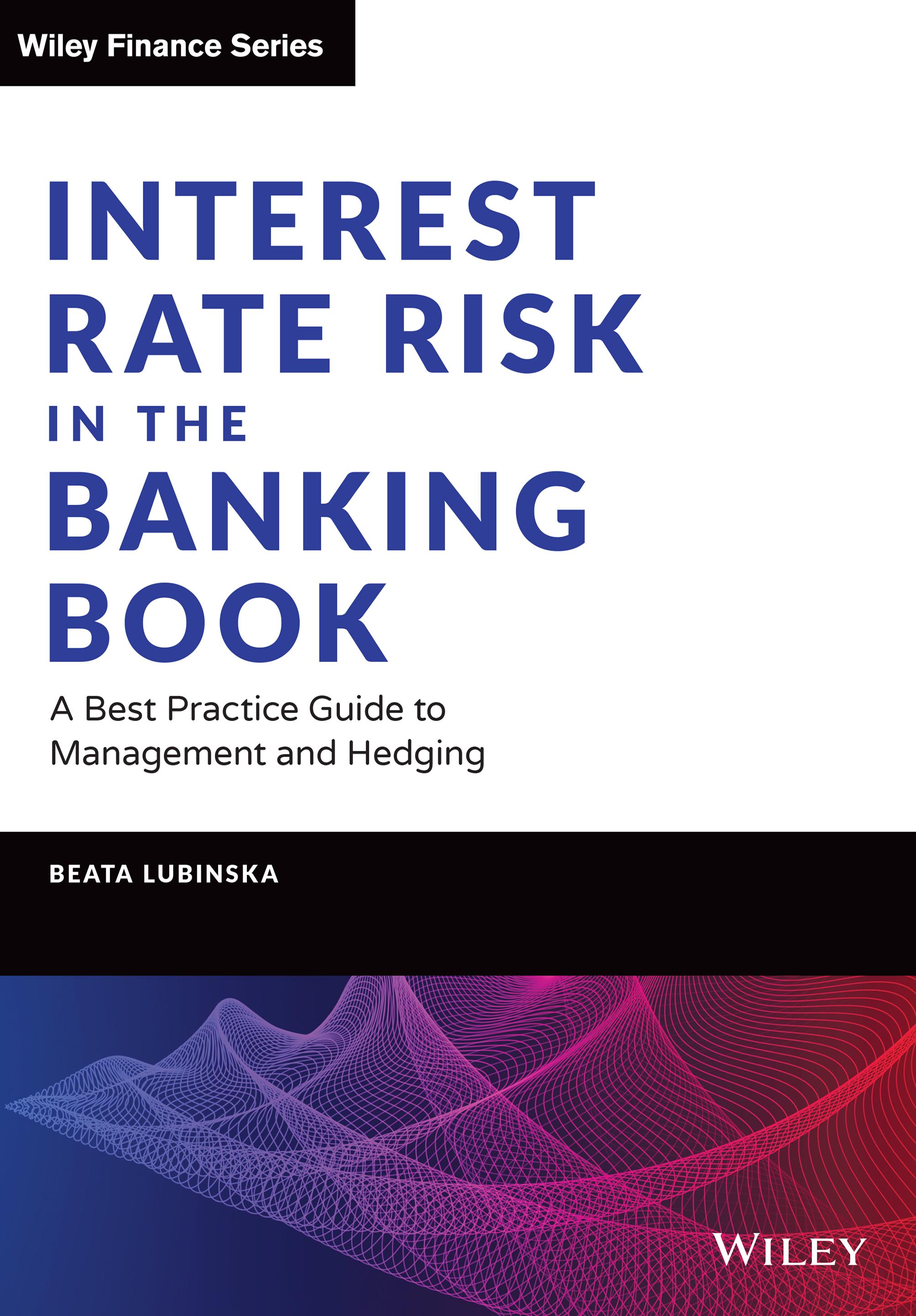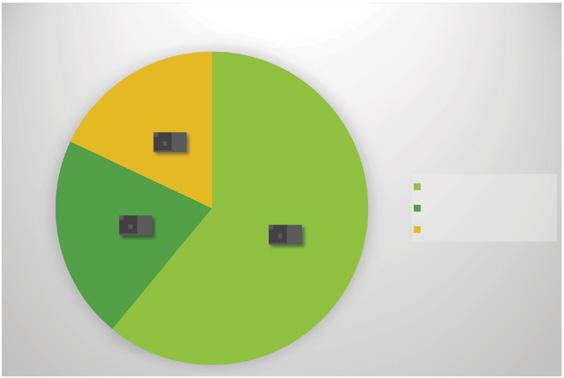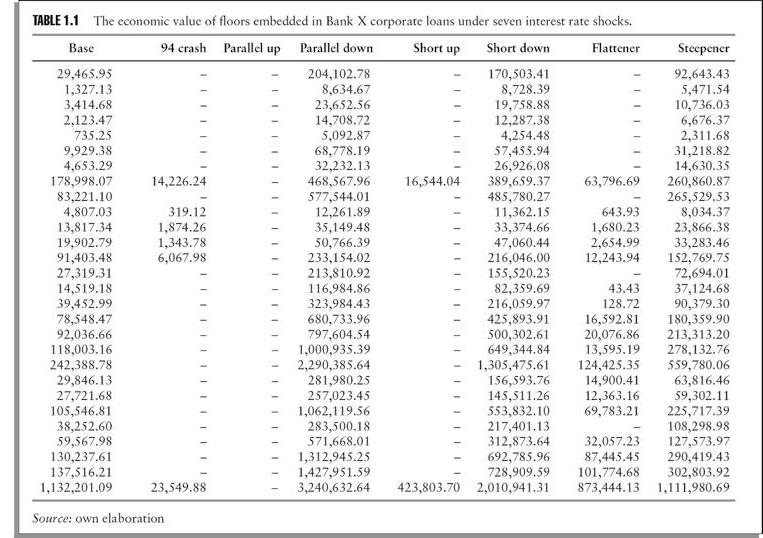Rate Risk in the
Visit to download the full and correct content document: https://ebookmass.com/product/interest-rate-risk-in-the-banking-book-a-best-practiceguide-to-management-and-hedging-beata-lubinska/
More products digital (pdf, epub, mobi) instant download maybe you interests ...
Asset Liability Management Optimisation: A Practitioner's Guide to Balance Sheet Management and Remodelling Beata Lubinska
https://ebookmass.com/product/asset-liability-managementoptimisation-a-practitioners-guide-to-balance-sheet-managementand-remodelling-beata-lubinska/
Understanding Risk Management and Hedging in Oil Trading: A Practitioner's Guide to Managing Risk 1st Edition Chris Heilpern
https://ebookmass.com/product/understanding-risk-management-andhedging-in-oil-trading-a-practitioners-guide-to-managingrisk-1st-edition-chris-heilpern/
Evidence-Based Practice in Nursing & Healthcare: A Guide to Best Practice
https://ebookmass.com/product/evidence-based-practice-in-nursinghealthcare-a-guide-to-best-practice/
Evidence Based Practice in Nursing & Healthcare: A Guide to Best Practice 3rd Edition, (Ebook PDF)
https://ebookmass.com/product/evidence-based-practice-in-nursinghealthcare-a-guide-to-best-practice-3rd-edition-ebook-pdf/
Evidence Based Practice in Nursing & Healthcare: A Guide to Best Practice 4th Edition, (Ebook PDF)
https://ebookmass.com/product/evidence-based-practice-in-nursinghealthcare-a-guide-to-best-practice-4th-edition-ebook-pdf/
Dental Practice Transition: A Practical Guide to Management 2nd Edition
https://ebookmass.com/product/dental-practice-transition-apractical-guide-to-management-2nd-edition/
BlackRock's Guide to Fixed-Income Risk Management
Bennett W. Golub
https://ebookmass.com/product/blackrocks-guide-to-fixed-incomerisk-management-bennett-w-golub/
The U.S. Banking System: Laws, Regulations, and Risk Management 1st ed. 2020 Edition Felix I. Lessambo
https://ebookmass.com/product/the-u-s-banking-system-lawsregulations-and-risk-management-1st-ed-2020-edition-felix-ilessambo/
The Wiley handbook of what works in violence risk management: theory, research, and practice Craig
https://ebookmass.com/product/the-wiley-handbook-of-what-worksin-violence-risk-management-theory-research-and-practice-craig/
Interest Rate Risk in the Banking Book
A Best Practice Guide to Management and Hedging
BEATA LUBINSKA
This edition first published 2022
Copyright © 2022 by John Wiley & Sons, Ltd.
Registered office
John Wiley & Sons Ltd, The Atrium, Southern Gate, Chichester, West Sussex, PO19 8SQ, United Kingdom
For details of our global editorial offices, for customer services and for information about how to apply for permission to reuse the copyright material in this book please see our website at www.wiley.com.
All rights reserved. No part of this publication may be reproduced, stored in a retrieval system, or transmitted, in any form or by any means, electronic, mechanical, photocopying, recording or otherwise, except as permitted by the UK Copyright, Designs and Patents Act 1988, without the prior permission of the publisher.
Wiley publishes in a variety of print and electronic formats and by print-on-demand. Some material included with standard print versions of this book may not be included in e-books or in print-on-demand. If this book refers to media such as a CD or DVD that is not included in the version you purchased, you may download this material at http://booksupport.wiley.com. For more information about Wiley products, visit www.wiley.com.
Designations used by companies to distinguish their products are often claimed as trademarks. All brand names and product names used in this book are trade names, service marks, trademarks or registered trademarks of their respective owners. The publisher is not associated with any product or vendor mentioned in this book.
Limit of Liability/Disclaimer of Warranty: While the publisher and author have used their best efforts in preparing this book, they make no representations or warranties with respect to the accuracy or completeness of the contents of this book and specifically disclaim any implied warranties of merchantability or fitness for a particular purpose. It is sold on the understanding that the publisher is not engaged in rendering professional services and neither the publisher nor the author shall be liable for damages arising herefrom. If professional advice or other expert assistance is required, the services of a competent professional should be sought.
Library of Congress Cataloging-in-Publication Data
Names: Lubinska, Beata, 1973- author.
Title: Interest rate risk in the banking book : a best practice guide to management and hedging / Beata Lubinska.
Description: Chichester, West Sussex, United Kingdom : John Wiley & Sons, Ltd., 2021. | Includes bibliographical references and index.
Identifiers: LCCN 2021028310 (print) | LCCN 2021028311 (ebook) | ISBN 9781119755012 (hardback) | ISBN 9781119755029 (adobe pdf) | ISBN 9781119755036 (epub)
Subjects: LCSH: Interest rate risk. | Asset-liability management. | Banks and banking.
Classification: LCC HG1621 .L83 2021 (print) | LCC HG1621 (ebook) | DDC 332.1068/1—dc23
LC record available at https://lccn.loc.gov/2021028310
LC ebook record available at https://lccn.loc.gov/2021028311
Cover Design: Wiley
Cover Image: © in-future/iStock/Getty Images Plus/Getty Images
Set in 10/12pt Sabon LT Std by Straive, Chennai, India
“To my Father. Thank you for inspiring me, for guiding me and for your fantastic lectures about the Universe”.
There are so many well-written books and articles focused specifically on Interest Rate Risk in the Banking Book (IRRBB) and, more broadly, on Asset Liability Management (ALM). Therefore, the concepts related to IRRBB are already well understood by market practitioners. Recently I have found Paul Newson’s (2017) book, which is fully dedicated to the topic of IRRBB, very useful and well written. I have read many books on ALM that I have found extremely useful in my career as a treasurer in a small bank.
In general, I love reading all books on ALM and treasury as I truly believe there is always something new to learn, and I am interested in seeing how the same concept is approached by other market practitioners. As an author I appreciate the amount of time and effort spent on preparing any book and I am grateful that some authors have shared their knowledge and experience. Every book reflects years and years of hard work and learning, and usually the objective of any book is to share the best of the author’s knowledge and experience. This is exactly the case for this book.
Having said that, my intention here is to complement existing writing on IRRBB and ALM over the past years. My main objective is to share my experience and knowledge gathered over years of working in the banking industry with the focus on the importance of this risk category. It is based almost exclusively on practical case studies and examples which I have examined in my work as a treasurer, head of IRRBB and other positions. The theory lying behind the IRRBB concept is deliberately reduced to the minimum required so that the main attention is dedicated to various case studies such as identification of IRRBB sources in a number of banks, enhancement of IRRBB framework, IRRBB stress testing and even an example of an ALM report with the focus on IRRBB, which I hope will be of value to the reader.
The second objective of the book is to share with the reader practical examples of an integrated approach to the management of ALM risks in the treasury, i.e. the integrated approach for building the hedging and funding strategy in one holistic exercise. This is an increasingly important task for treasurers in financial institutions, and brings quantifiable benefit in terms of reduction of the funding costs of these institutions.
As already mentioned, the theoretical part of the book is reduced to a minimum based on the rationale that there are many great books already available which explore the IRRBB metrics and other concepts in details. This book mainly consists of walk-through practical case studies presented for hypothetical banks and challenges in daily management of IRRBB – for example, how to fund and hedge the Banking Group’s subsidiary and integrated approach for set up of the funding plan. However, the book also contains a brief summary of main concepts related to IRRBB.
Another important point which needs to be highlighted, in order to be crystal clear about the approach undertaken in articulating the book structure, is that case studies and examples are mainly based on the standardised approach proposed by the Basel Committee on Banking Supervision (BCBS) in 2016, which is already incorporated widely by national legislations across the globe. This book already envisages the compliance with the Basel approach. Therefore, the case studies and examples are built on that basis. Consequently, if the reader is looking to enhance the IRRBB framework outside the Basel recommendations this book won’t provide the solution.
The audience for the book is envisaged as treasury professionals, i.e., treasurers of medium and small sized banks who have adopted the BCBS standardised approach as an IRRBB framework. In addition, this is a perfect guide for challenger banks which are growing fast, are capital constrained and need to optimise their funding and hedging strategy. I truly believe this book will help treasury professionals in building the overall enhanced IRRBB framework based on the Basel Standards; meanwhile Risk and Audit professionals will gain the knowledge necessary to challenge the strategies undertaken by a treasurer.
Driven by the simplicity and elegance of the Basel approach this book is also well suited to practitioners who are just starting the IRRBB journey and want to equip themselves with practical tools to manage this risk.
Introduction
Interest Rate Risk in the Banking Book (IRRBB) has become a hot topic over recent years and there is a clear trend towards standardisation of the IRRBB approaches for measurement, modelling and monitoring in the banking industry. From a regulatory perspective, the journey started in April 2016 when the Basel Committee on Banking Supervision (BCBS) published the final Standards (BCBS Standards) on IRRBB that replaced the 2004 Principles. The new standards set out the Committee’s expectations on the management of IRRBB in terms of identification, measurement, monitoring, control and supervision, and reflect changes in supervisory practices due to the exceptionally low interest rates, whilst providing methods and models to be used by banks in a wider and enhanced risk management framework. BCBS Standards had an important impact on the global adoption of standardised metrics and emphasised a clear difference between market risk (inherent in the trading book) and IRRBB (inherent in the banking book). However, IRRBB is not only a regulatory term. It has an impact on the profitability of financial institutions and its mismanagement leads to losses. There are many cases where banks have suffered from margin compression in the aftermath of the financial crisis when interest rates started going down. These banks failed to hedge the banking book against rates going down and, consequently, Current Accounts and Saving Accounts (CASA) and equity liabilities were reinvested at lower rates. Additionally, a non-transparent and deficient internal transfer pricing framework from business to the central unit caused open positions and margin at risk. The robust balance sheet management presupposes that customer business and financial risks are clearly separated with sound methodology. Therefore, the understanding of the interrelation between IRRBB and Funds Transfer Pricing (FTP) is an imperative in order to ensure effectiveness in the risk management process and allocation of clear responsibilities between stakeholders within the financial institution.
Without any doubt, the main driver for IRRBB evolution is a persistent low-rate environment. In some locations rates even moved into negative territory. The concept of negative rates is against a fundamental paradigm in finance that money has a time value that results from different investment opportunities. A fixed income security bought today for a specified term will return the payoff or future value that is dependent on both the compounding method and interest rate employed. Interest rates paid or charged for money depend, to a great extent, on the length of the term of investments. Therefore, the interest rate represents the price paid to use money for a period of time, which is commonly referred to as the time value of money.
In recent years, central banks in Europe have employed negative rates as an unprecedented measure to combat recession and foster recovery. The idea of being charged for lending is counter-intuitive and puts into question the concept of time
value of money described above. Such a move is viewed as controversial by economists as there is a clear impact on the banking system. One of the primary concerns over negative rates is fuelling of cash hoarding behaviours as depositors are penalised instead of being compensated. Consequently, they are incentivised to hold cash. There is also a clear impact on the banks’ profitability. Negative rates increase costs for banks with excess liquidity, resulting in a search for ways to offset these costs through raising account fees and charges and, in extreme cases, cutting back lending to the real economy. Indeed, the interest rates concept is extremely important because changes in interest rates affect a bank’s earnings and its risk situation in different ways. This is exactly the reason why the regulator advocates the need for appropriate and precise methods for the measurement of the interest rate risk which enable the revelation of all its significant sources and the evaluation of its impact on the operative profile of the bank.
The regulatory aspect which reflects the changes in the market landscape is an important driver for IRRBB evolution and enhanced framework. However, the author believes there is another reason for the change in approach for the management of financial risks, in particular IRRBB and liquidity risk. It is beneficial for banks to adopt holistic and proactive management of financial risks. In her book Asset Liability Management Optimisation (Lubinska, 2020), the author examined the interrelation between interest rate risk and liquidity risk and quantified the benefits in terms of the reduced cost of funding achieved by the optimisation exercise and the holistic management of both risk categories.
The first attempts to integrate the interest rate risk and another type of risk (credit risk) has been proposed by Drehmann et al. (2010), and Alessandri and Drehmann (2010). The work performed by Drehmann et al. constructs the general framework for measuring the riskiness of banks, which are subject to correlated interest rate and credit shocks. The results show a strong interaction between credit risk and interest rate risk, sufficient to influence net profitability and capital adequacy: in particular, the magnitude of each risk component and the speed with which profits return back to equilibrium after the hypothesised shocks depend, among other things, on the repricing characteristics of the positions in the banking book and the cost of funding (Baldan et al., 2012).
The literature has thoroughly debated both the liquidity risk and interest rate risk and, until the regulatory updates on stress testing, IRRBB and liquidity, there seems to be little contribution from scholars on the integrated management of these types of risk. The link between financial risks can be seen in one of the main functions of credit institution, i.e., maturity transformation. Banks finance their investments by issuing liabilities with a shorter maturity than that of their investments; the resulting imbalance between the terms for the assets and liabilities means that they take on the interest rate risk and liquidity risk (Resti and Sironi, 2007). Baldan et al. (2012) launched the hypothesis that there is a direct relationship so that reducing the exposure to the liquidity risk induces a reduction in the interest rate risk as well. Their study analysed a small Italian bank during the years 2009 and 2010 which had to modify its liquidity profile in order to comply with the Basel III requirements. As a result, it generated the simultaneous reduction in its exposure to the interest rate risk. The authors conclude that there is a need to arrive at integrated risk management in which the control of
each of these risks is placed in relation to the bank’s different functions and influences its strategic decisions (Baldan et al., 2012).
After the regulatory updates, the silo basis approach is being slowly replaced by more integrated management of ALM risks. This is because profitability remains a key concern for the banking sector. The low profitability and widespread dispersion for some countries, along with high operating costs, continues to dampen the profitability prospects, especially for the European banking sector. Thus, there is a need to come up with new approaches which could address shrinking profitability, a heavily regulated landscape and exposure to financial risks. This necessity has been highlighted by Choudhry (2017) in “Strategic ALM and Integrated Balance Sheet Management: The Future of Bank Risk Management”. In this article Choudhry suggests that the discipline of ALM, as practised by banks worldwide for over 40 years, needs to be updated to meet the challenges presented by globalisation and Basel III regulatory requirements. In order to maintain viability and a sustainable balance sheet, banks need to move from the traditional “reactive” ALM approach to a more proactive, integrated balance sheet management framework. This will enable them to solve the multi-dimensional optimisation problem they are faced with at present. In his book The Moorad Choudhry Anthology: Past, Present and Future Principles of Banking and Finance (2018), Choudhry describes a “vision of the future” with respect to a sustainable bank business model. This vision of the future contains the concepts of strategic, integrated and optimised ALM. The need for integration is now getting recognition from treasurers, risk managers and regulators. It is also starting to be considered among the ALM systems providers. They are attempting to build ALM solutions which focus on the integration between IRRBB, liquidity and FTP, supporting the view that, today, more holistic balance sheet risk management is required. Interest rate risk in banking cannot be viewed in isolation from liquidity risk, funds transfer pricing or capital management. Balance sheets have become more volatile – a result of changing term structures, optionality, better informed customers and the use of derivatives.
The objective of this book is to serve as a practical support in the daily management of IRRBB through the examples, case studies and solutions which have been developed during the author’s career. It is a summary of many practical ideas related to hedging of the exposure to IRRBB subcategories, i.e., yield risk, option risk, gap risk and basis risk. The book represents the author’s attempt to provide an insight into the practical aspects of IRRBB management along with the description of the main metrics and their calculation methods. It presents the concept of immunisation and natural hedging strategy showing the benefits from the optimisation exercise and a holistic view for funding and hedging strategy adopted by the treasury. The book contains case studies which walk the reader through different aspects of building the hedging and funding strategy through the holistic and integrated approach as opposed to the silo basis approach, which is still so often adopted in this process. Therefore, one of the objectives of this book is to focus on the optimisation of hedging strategies and proactive management of IRRBB both on the short part of the interest rate curve (directional gap strategy) and on the medium-to-long part of the curve (riding the yield curve strategy). Additionally, the author walks the reader through the IRRBB stress testing, policy and instruments used in the daily management of the treasury.
Chapter 1 of this book introduces the subcategories of IRRBB and provides the practical examples of identification of the risk sources in the banking book. This part highlights the main regulatory developments, sheds light on the results of the IRRBB stress test performed by the European Central Bank (ECB) in 2017 and provides examples of historical interest rate shocks which could be applied for the measurement of changes in Economic Value of Equity (EVE) or in the IRRBB stress testing framework. In this section the author answers the question why it is so important to adopt the enhanced IRRBB framework and examines the concept of margin compression faced by banks worldwide.
Chapter 2 contains a number of practical case studies for identification of the IRRBB sources, practical approaches for hedging some products with behavioural nature such as reversions or lifetime mortgages and how to enhance the IRRBB framework in a bank. This chapter walks the reader through the dual nature of IRRBB, the trade off between Net Interest Income (NII) volatility and change in EVE and the calculations methods for the main metrics. Additionally, it extends the concept of rate transformation and riding the yield curve strategy. There are case studies related to the calculation of NII sensitivity through flows and stock approach and analysis of the impact driven by the existence of automatic options in the banking book. Chapter 2 summarises the main IRRBB metrics such as Earnings at Risk (EaR), Value at Risk (VaR) and static IRRBB methods.
Hedging instruments and hedging strategies are the main subject of Chapter 3 which, additionally, provides the reader with the practical example of the Asset Liability Management (ALM) report with key information to be communicated to the Asset Liability Management Committee (ALCO) members. It contains an extensive analysis of the IRRBB position of an illustrative bank. In this section the natural hedging and synthetic hedging strategy are analysed in detail supported by practical examples.
The concept of behaviouralisation is covered in Chapter 4 with the main focus on modelling of Non-Maturing Deposits (NMDs). This chapter emphasises the reason for modelling items without deterministic maturity and the impact on an IRRBB position driven by behaviouralisation both on the asset and liability side. It walks the reader through a simple approach for modelling of balances volatility, rate sensitivity and average life of the product. The chapter introduces also the term of structural and financial prepayments.
The concept of the application of optimisation methods in ALM, interrelation between liquidity risk and IRRBB is the crucial point of Chapter 5. It shows how to set up an integrated approach between funding and hedging strategy as the holistic view for the balance sheet. There is a case study related to the optimisation of hedging strategy and, in the same exercise, reduction of cost of funds.
The second part of Chapter 5 is fully dedicated to the strategic tool which the treasury has at its disposal to support the optimisation exercise, i.e. the Funds Transfer Pricing (FTP) process. It shows several examples of a methodological approach to the correct transfer of both types of risks, i.e., liquidity and IRRBB from business to the central unit.
Chapter 6 is divided into two parts. The first part walks the reader through the proposal of methodological approach for IRRBB stress testing and ICAAP. It shows practical examples of the implementation of the stress test and ICAAP with
illustrative numbers. The second part of this chapter addresses IRRBB governance and the Risk Appetite Statement (RAS).
Appendix 1 illustrates the practical example of the IRRBB policy compliant with BCBS Standards, walks the reader through the main section of the policy with the emphasis on the calculation of the value of the automatic option in a negative rates environment and an illustrative example of the treatment of NMDs for IRRBB purposes.
Appendix 2 illustrates a practical example of the IRRBB model manual compliant with BCBS Standards. This section has been included to support the reader with the implementation of methodological changes required by the Standards. Appendix 2 is meant to support smaller banks where they intend to apply the standardised approach as the IRRBB measurement framework.
CHAPTER 1
What is IRRBB and why is it important?
The common definition of Interest Rate Risk in the Banking Book (IRRBB) describes the threat to the capital position and earnings of a bank driven by changes in the interest rates in the market. Though the definition is simple, the underlying threat to the bank’s resilience is potentially serious if IRRBB is mismanaged. There are multiple ways that the interest rate curve can change its shape, i.e., it could take the form of a steepener, a flattener, a humped or an inverted curve. Changes to interest rates threaten a bank’s earnings by impacting its Net Interest Income (NII) which is the main source of earnings for a bank. It is estimated that, in the composition of the total income of a bank, NII contributes, on average, about 60% (Figure 1.1).
Changes to interest rates also threaten the underlying value of bank’s assets, liabilities and off-balance sheet instruments, given the adverse impact which may arise on the present value of items, in particular their future cash flows. This is known as the impact on economic value of the banking book, which is understood as the sum of the net present value of assets, the net present value of liabilities and the net present value of off-balance sheet items.
We can already see that there is a dual view under which interest rate risk in the banking book should be analysed and these two views are complementary. The shortterm view relates to the impact on earnings of a bank and this is known, in the IRRBB parlance, as the short end curve impact. The time horizon for this kind of analysis is short, spanning from 12 months to a maximum of 36 months. Under short-term analysis we are looking at the negative impact on a bank’s earnings (NII) driven by the fluctuation in the interest rate curve. One can argue that not only negative impact should be considered but the earnings variability as well. Excessive earnings sensitivity is considered bad practice in IRRBB management. We will tackle this point at a later stage.
Composition of total income
Source: own elaboration
The medium-to-long-term view relates to the impact on economic value of a bank and looks at a much longer horizon, i.e., it includes all risk sensitive positions in the banking book. The outcome of the economic value analysis provides the fundamental number both for the financial institution and for the regulator as it describes the extent of structural mismatching between assets and liabilities. It indicates embedded, although not crystallised, losses or gains in the economic value of a bank.
Managing IRRBB properly is vital due to it being a major source of income. IRRBB has an impact on a bank’s capital base as it is a potential threat to capital, and interest movements create sensitivity to the NII. Therefore, a proper framework creates an opportunity for income generation both under near-term and longer-term horizons. This is what is meant by a steering approach or trade-off between the NII and EVE metrics. This point is analysed in detail in Chapter 6.
As already shown in Figure 1.1, in the composition of the total income of a bank NII contributes on average about 60%, 85% of which is considered to be gained through margin differential and the remaining 15% resulting from maturity transformation. Additionally, IRRBB creates a capital demand under Pillar 2. Mismanagement can be very expensive and can have implications across different areas of a bank. In the first place, both incorrect assumptions and risk underestimation can affect the P&L of the treasury, which is responsible for ALM profitability. Secondly, it affects P&L results of the business units through FTP rates and FTP margins and the correct IRRBB assumptions impact the product profitability assessment through the interest income split. Figure 1.2 shows an example of NII compression in a banking group. This group lost billions because it failed to hedge itself against rates going down and, consequently, reinvested CASA and equity liabilities at lower rates. Interest rate risk was not fully transferred from the businesses to ALM, causing open positions and margin at risk.
FIGURE 1.1 Composition of the total income in a bank.
Example of margin compression caused by lowering interest rates and an inefficient FTP process.
Source: own elaboration
SUBCATEGORIES OF INTEREST RATE RISK
There are four main subcategories (subtypes) of IRRBB to be identified, managed and reported by a financial institution. The bank’s banking book usually is exposed to all subtypes to a lesser or greater degree dependent on its business model. For example, banks with a conventional business model, i.e., where the medium-to-long-term assets are funded by short-term repricing liabilities, mainly run the risk of exposure to repricing and yield risk. This is known as riding the yield curve strategy or rate transformation. This is because, in the case where rates go up, the bank incurs embedded losses in terms of EVE and negative P&L impact on NII (this case is described in detail in the following section).
Commercial banks with vast depositors’ base are exposed to behavioural risk given that deposits without deterministic maturity need to be modelled for the purpose of Asset Liability Management (ALM). This behavioural option both on the customer side (a depositor can withdraw money at any time) and on the bank’s side (the bank can change the interest rate on the product at any time) is known as optionality risk and represents an important risk category to be managed. Hedging of IRRBB is based on the behavioural basis, which means that getting the behavioural assumptions wrong may easily lead to the over- or under-hedging of an interest rate risk position.
In some countries, for example the UK or the Middle East, assets at the floating rate are strongly correlated to the base rate. However, these banks finance their assets through the interbank market and/or behavioural liabilities (deposits). Given that there is no perfect correlation between market rates and the administered rate (where the interest rate of behavioural liabilities and assets can be changed by banks at will), and there is always a time lag between administered rate adjustment resulting from market rate changes, banks are vulnerable to exposure from basis risk. As described later, basis risk itself has a number of subcategories.
FIGURE 1.2
Repricing risk (gap risk)
Repricing risk, known also as gap risk, represents an important category of IRRBB. It arises because assets have a different repricing frequency to liabilities. For example, if assets reprice before liabilities, we say that a bank runs repricing mismatching, and it is asset sensitive. On the other hand, if liabilities reprice before assets a bank is liability sensitive and it is exposed to the increase in the interest rates level. However, before going into detail we need to introduce the concept of gap.
Gap represents the difference between the outstanding amount of Risk Sensitive Assets (RSA) and Risk Sensitive Liabilities (RSL). The residual gap is negative when there is more RSL than RSA in a certain time bucket. For example, let’s imagine this in simple terms: we have 100 GBP of floating rate asset repricing within the next 1 month funded by 100 GBP of fixed rate time deposits which matures and therefore resets its rate in the next 6 months (see Figure 1.3).
The gaps in Figure 1.3 show the short-term repricing asset funded by longer term repricing liability. As already mentioned, these gaps are called gaps in repricing and drive the bank’s exposure to the repricing risk.
This exposure needs to be quantified (Chapter 2) and drives the impact on a bank’s NII where rates move up or down during the period of analysis. If the rates go up the exposure shown in Figure 1.3 has a positive NII impact because assets are earning more in terms of interest. On the other hand, if rates go down there will be a negative NII impact for the same reason (assets earn less in terms of interest).
It is important to highlight, at this point, that repricing and yield risk are measured through gap analysis, i.e., the tool which shows the residual gaps allocated to
On the short part of the curve the bank is asset sensitive and exposed to the downward movement of the curve
Source: own elaboration
FIGURE 1.3 Illustrative example of repricing risk.
the corresponding time bucket (time slot). BCBS Standards has introduced 19 time buckets. The banking book items are allocated according to their first repricing date or maturity date (this is analysed in detail in Chapter 2).
Yield risk
This kind of IRRBB subcategory refers to the potential adverse change in the Economic Value of Equity (EVE) of a bank and, therefore, it refers to the medium-tolong part of the curve. It forms the structural risk exposure of a financial institution and is driven by non-parallel shifts in the yield curve. This exposure is driven by IRRBB strategy and the steering approach (discussed in Chapter 6). For example, let us imagine that a bank runs a riding the yield curve strategy, i.e., it extends fixed rate mortgages to retail clients which are funded by retail current and saving accounts (CASA) with a shorter repricing period. There is a positive NIM impact related to this particular strategy because under the upward sloping shape of the curve the rates associated with longer tenors are higher than the rates on the short part of the curve. The rate transformation ensures earnings but, at the same time, it exposes the risk of rates moving up (see Figure 1.4).
The yield risk relates to the changing relationship between interest rates of various maturities (tenors) of the same curve. In the example shown in Figure 1.4, the risk arises between two tenors, i.e., the 2Y and the 10Y tenor. As we will see in Chapter 2, the yield curve risk is captured through the application of a number of interest rate risk shocks and under different scenarios (for example, a contractual versus behavioural scenario, or a balance sheet growth assumption).
The potential increase at the 2Y interest rates will affect the economic value of the banking book as the present value of the asset side will become lower after an increase in interest rates and there is no offsetting reduction in the present value of liabilities (there is an open risk position).
FIGURE 1.4 Riding the yield curve strategy and yield risk.
Source: own elaboration
Optionality risk
As underlined in the BCBS Standards there are two types of optionality risk in the banking book, i.e., behavioural optionality and automatic options. The behavioural option is the most common phenomenon in the banking book. It arises when a customer of a financial institution has the right but not obligation to influence the timing and/or the magnitude of the cash flows of an asset, liability or off-balance sheet instrument. Sight and savings deposits (CASA) whose maturities are uncertain for the institution entail a risk for the banking book in the form of a right of withdrawal at any time (current accounts) in relation to the assumed (by the bank) maturity. This is the behavioural optionality on the client (depositor side). From the other side, a bank has the optionality to change the price (or customer rate) for these products, giving the client only short notice, or no notice at all. This is the option on a bank’s side.
Behavioural risk arises also from the assets side and is driven by the early redemption option (full prepayment or partial prepayment) of mortgages or some customer loans. The client has the right to repay the loan whenever he/she decides, without any penalty (or with a penalty in some cases).
Another important source of the interest rate risk which is driven by the behavioural assumptions is pipeline risk. It is driven by the time difference between agreement of the mortgage product rate and draw down of balance and the consequent risk that repricing in an interest rate move will compress the margin of the product.
Early redemption of assets, if not accounted for in the hedging strategies of a bank, may cause over- hedging because the amount of the payer swap is higher than the actual amount of fixed rate assets (which has been repaid). Consequently, the bank has to adjust hedging positions and, in the meantime, is left with the time bucket sensitivity and negative impact in terms of the PV01 metric. The prepayment pattern will change as a function of the interest rates movements. In the case of a low interest rate environment, i.e., higher differential between the committed interest rate paid by the client and external market rates, the prepayment events tend to increase as clients want to re finance their loans in order to pay lower rates. The early redemption of mortgages (prepayments) and behaviouralisation of deposits have an important impact on both the gap risk and yield risk discussed earlier.
The automatic options, as opposed to the behavioural optionality, always follows a rational pattern, i.e., if the agreed event happens the option is executed. Otherwise, it is not. This is the case with floors, caps or collars embedded in the banking book. Quite often, especially in European banks, the embedded floors are an important part of the asset base (either floors at 0% or at 1%) as they protect the Net Interest Income from losses in a negative rates environment. In a negative interest rate environment, the implicit floor at 0% on a bank’s liabilities (current accounts) cannot be ignored, even though no institution has the intention of selling interest rate options outright.
EXAMPLE 1
Impact of automatic options embedded in the banking book of Bank X.
Bank X has the banking book composed as follows:
ASSET SIDE
EUR 1.2bn of corporate loans with the contractual floor at 0%. These assets are repricing over a period of 1 month.
LIABILITY SIDE
EUR 900m of client deposits with the implicit zero floor at 0% slotted on the uniform basis between 1 month and 12 months.
Bank X has a material amount of automatic interest rate options (IROs) which are implicitly embedded in the corporate loans on the asset side. Therefore, Bank X is a holder of those options (a long option position on the asset side). In addition, Bank X has the short option position at 0% strike on the liabilities side (deposits) as there is no willingness to cut depositors’ rates below 0% in the case of rates entering negative territory. Bank X’s senior management does not want to lose depositors who could potentially leave for another bank due to unfavourable repricing.
In a negative interest rates environment, the floor on the asset side is executed (the option is in the money) limiting the potential squeeze of the NIM.
Bank X measures the impact of interest rate movements on EVE under seven interest rate shocks, in particular:
– Short up
– Short down
– Parallel up
– Parallel down – Steepener
– Flattener
– 94 crisis scenario
In the example, the interest rate curve is assumed as of 30 April 2019 and floor values have been calculated using the Bachelier model (see Chapter 3).
The illustrative values of floors embedded in the corporate loans, under different interest rate shocks are shown in Table 1.1.
(Continued)
(Continued)
In order to understand the impact on the economic value of the bank, resulting from interest rate changes, Bank X calculates the change in the value of the optionality component as a difference between the option value under a shock scenario (KAOshock) and base scenario (KAObase). This is shown in equation 1.
Change in the value of the automatic optio n KAO KAO shockbasse (1)
The positive economic value of floors, which are contractually embedded in corporate loans, offset the embedded loss on the liability side where rates move downwards. This offset depends on the maturity of the floor and its strike. Usually, assets have longer behavioural maturity than deposits, i.e., there is positive maturity transformation in the banking book. Also, the floor for assets is usually set up above 0%. Therefore, the potential positive value of the floor on the asset side fully offsets the loss on the liability side, resulting from the short option position on deposits when the rates go down.
The numbers in Table 1.2 are illustrative and invented by the author to represent the concept.
In Example 1, Bank X is exposed to the downward movement of the interest rate curve (see negative values in terms of ΔEVE under all downward scenarios). In fact, it can be clearly seen because there is an embedded loss under parallel down (EUR 31m), short down (EUR 25m) and steepener (EUR 11m) scenario (the detailed definition of the scenario is provided in BCBS Standards). This is because the floating rate assets are funded by behavioural liabilities (see Figure 1.5).
TABLE 1.2 The impact of automatic options on ΔEVE of Bank X.
Economic value analysis – behavioural
Source: own elaboration
Source: own elaboration
However, the economic value of automatic options (floors on the asset side) which are in the money, under the assumption that interest rates are in negative territory, fully offset EVE loss under downward scenarios. As a result, the total change in EVE is as follows:
– Parallel down: +107m
– Short down: –6m
– Steepener: –11m
As already mentioned, Bank X is funded by CASA. Consequently, given the negative interest rates territory, it holds a short option position with strike at 0% on the liability side. This short option position, from an economic perspective, decreases the economic value of the bank’s equity under downward scenarios.
The 0% floor on deposits (especially retail deposits) should not be underestimated in the negative rate environment. This is because, from the theoretical standpoint, the potential loss is a function of interest rates going down. From the practical standpoint banks often charge negative rates on deposit holders through commissions applied and charges on transactions.
Basis risk
Basis risk forms an important category of IRRBB. It is defined as the risk arising from imperfect correlation between risk factors of products with similar characteristics. By the risk factor we intend the underlying term structure of interest rates, for example the government bond curve versus money market curve. A good example of basis risk exposure is funding the 1Y government bond with 1Y deposit repricing on a quarterly basis and indexed to LIBOR 3M. Even though both products have the same maturity of 1Y, their underlying market factors are different, i.e., they are priced off on different curves, which are not perfectly correlated. This example represents a typical understanding of basis risk but there are also additional subcategories of this risk.
Total in EUR Total in GBP Total consolidated
Bank X – Repricing Gap (behavioural) (in 000 Euro)
FIGURE 1.5 Repricing Gap of Bank X.
Example of basis risk exposure arising from different risk factors.
Source: own elaboration
The floating rate assets indexed to LIBOR 3M and funded by liabilities linked to LIBOR 6M cause basis risk exposure. This is because the movement of LIBOR 3M and LIBOR 6M are not perfectly correlated, i.e., the increase in LIBOR 3M is not followed by the same magnitude of increase in LIBOR 6M.
Another example consists of funding floating rate assets indexed to LIBOR with administered rate liabilities (a common case in Europe). Although it is true that a bank can reprice the behavioural liabilities when it wants, even if it does so there is always a time lag between the movement in market rates and the adjustment in the administered rate. Another example of basis risk is the loan priced on the prime rate but funded by liability indexed to LIBOR. The prime rate would be adjusted only by discrete amounts and its differential with money market rates could drift substantially.
Figure 1.6 shows the exposure to the movement of spread Base rate – LIBOR 3M and Administered rate – LIBOR 3M.
Frequently, the exposure to basis risk in the banking book is driven by interest rate swaps which are taken on to hedge the structural exposure of a bank.
EXAMPLE 2
Example of basis risk exposure of Bank Y.
Bank Y has £100m of fixed rate deposits which fund the portfolio of commercial mortgages indexed to the Bank of England (BoE) rate, i.e., tracker loans. These are called trackers because they follow the movement of the Bank of England base rate.
The bank enters into receiver swaps (it receives fixed rate and pays SONIA rate). The bank is exposed to the movement of the spread between a SONIA rate and a BoE rate it receives on the asset side (see Figure 1.7).
FIGURE 1.6
AssetLiability
100m tracker loans
IRS fixed rate receive
100m fixed rate deposits
IRS SONIA pay
Source: own elaboration
REGULATORY OVERVIEW FOR IRRBB – WHAT HAS CHANGED?
There is increasing regulatory attention towards IRRBB and it has become one of the hot topics for regulators in recent years, as we show below. The section below focuses on the IRRBB requirements in Europe.
The regulatory roadmap starts in May 2015 when the European Banking Authority (EBA) issued the “Guidelines on the management of the interest rate risk arising from non-trading activities”. The Guidelines are addressed to financial institutions in Europe, and replaced the Committee of European Banking Supervisors (CEBS) Guidelines as of January 2016. Subsequently, in April 2016, the Basel Committee on Banking Supervision (BCBS) published the final Standards on IRRBB that replaced its 2004 Principles. The new standards set out the Committee’s expectations on the management of IRRBB in terms of identification, measurement, monitoring, control and supervision. The updated IRRBB Principles reflect changes in market and supervisory practices due to the current low interest rate environment, and provides methods and models to be used by banks in a wider and enhanced risk management framework. On 31 October 2017, the EBA published a consultation paper on the update of its “Guidelines on the management of interest rate risk arising from non-trading book activities”. The long-awaited update for the management of IRRBB builds on the original guidelines published in May 2015, but compared to the 2015 version it has increased in size significantly. It is also effectively the translation into European law of the IRRBB Standards published by BCBS in April 2016. The EBA is still working on a number of technical standards as part of the ongoing Capital Requirements Directive (CRD) and Capital Requirement Regulation (CRR) revision in which the regulator will prescribe disclosure requirements and a standardised approach for IRRBB. These technical standards will be published separately at a later stage.
The final IRRBB guidelines known as the “Final Report” were issued by the EBA on 19 July 2018 and posed significant challenges for banks. As a result, adequate IRRBB management needs to be considered in several dimensions, not only in terms of the integrated software solution, revision of metrics and introduction of the model validation framework. With the new guidelines and more restricted manoeuvring capabilities banks will have to revise their IRRBB strategy and measures for its implementation.
FIGURE 1.7 Basis risk exposure: BoE rate – SONIA.
There are several changes introduced in the final EBA Guidelines. First is a major overhaul of the supervisory outlier test which measures how the EVE responds to interest rate shocks. The Supervisory Outlier Test (SOT) is an important tool for supervisors to spot excessive exposure of banks driven by the interest rates movements. The previously existing SOT measured changes arising from a +/–200 bps parallel yield curve shift. In the BCBS Standards and EBA Final Report, a different SOT definition was proposed introducing a 15% trigger compared to Tier 1 capital in combination with six interest rate scenarios that also include non-parallel shocks. The EBA has decided to implement both SOTs (20% and 15%).
In the updated EBA Guidelines the section on governance is significantly increased in size compared to the previous version published in 2015. It includes new guidelines on the risk management framework, risk appetite and model governance. While the guidelines on the risk management framework and risk appetite can be considered as a more detailed explanation of the original guidelines, the main addition is on model risk management. This requires banks to set up a model governance process, not only for behavioural models, but for all IRRBB management methods that traditionally have not always been within the scope of model governance. Various challenges have to be mastered when defining suitable governance – for example, the separation of and allocation of interest income to Business Units (BUs) and the treasury through FTP is highly controversial and emotional. Therefore, there should be the possibility, from the ALM system perspective, of providing clear-cut responsibilities through separation of books, for each component of interest income, and a transparent calculation methodology.
The technical implementation of a NII simulation is a major challenge for larger financial institutions. This is because the results of future NII are required for different purposes across the bank and an integrated and flexible approach is needed. We have seen that NII simulation is required for EBA stress tests, ECB IRRBB stress tests, and the Short-Term Exercise (STE). Now, we also have the EBA Guidelines disclosure. These different views required for NII simulation require solutions which ensure consistency between NII and EVE and serve the various purposes of NII simulation. Figures 1.8, 1.9 and 1.10 summarise the key changes and challenges introduced by the EBA Final Report.
Re-wording and clarification
1: Internal capital
IRRBB 2: Measurement of IRRBB
IRRBB 3: Interest rate shock scenarios
IRRBB 4.2: Policies
Additional high level guidelines
IRRBB 4.1: Internal governance arrangements
Detailed guidelines:
Revised calculation method
IRRBB 5: Supervisory standard shock
2.1 Scenarios and stress testing
2.2 Measurement and assumptions
2.3 Methods for measuring interest rate risk
2.4 Governance of interest rate risk
2.5 The identification, calculation and allocation of capital to IRRBB
EBA Guidelines on IRRBB – key sections. Source: own elaboration
IRRBB
FIGURE 1.8
Key changes
• Credit spread risk in the banking book (CSRBB) has been included in the scope of the Guidelines in the form of high level guidelines for institutions to identify their CSRBB exposures and ensure that CSRBB is adequately measured, monitored and controlled;
• Guidance has been added for the internal IRRBB measurement such as for institutions to consider negative interest rates in low interest rate environments;
• Guidance has been added in the governance section with regards to the assessment of new products and activities in terms of IRRBB and model validation.
Key changes
• A number of changes have been made to the existing supervisory outlier test. A set of new principles has been added to the calculation such as the removal of the zero bound floor and the inclusion of NPEs;
• The revised outlier test introduced by the BCBS Standards (threshold 15% of Tier 1 capital) has been included as an early warning signal on top of the current outlier test;
• Lower bound of –100 basis points (linear function between –100 and 0 bps) to be applied.
• The new threshold of 15% of Tier 1 will only apply to SREP category 3 and 4 institutions 6 months after the guidelines enter into force. It allows for a timely preparation for the calculations of the new outlier test and provides the smaller institutions with a longer phase-in period.
FIGURE 1.9 EBA Guidelines on IRRBB – key changes.
Source: own elaboration
Another area of concern is the guidance on capital calculation. In particular, the revised calculation of capital add-on for IRRBB requires the coverage for earnings risk and value risk so that both types of risks should be integrated in a consistent framework without duplication. Usually, if the bank’s ∆NII shows a loss under certain interest rate scenarios then we can easily expect that its ∆EVE will be showing a positive number. Given that the EVE is nothing more than the discounted value of future cash flows over the whole life of the banking book, those two metrics are showing the same things but under different time frames (although for the estimation of ∆NII the cash flows are not discounted). Consequently, the interpretation of the EBA Guidelines related to the capital add-on assessment could be that the impact for earnings needs to be considered only if it is showing a loss and ∆EVE is positive. Otherwise, there is a risk that the negative impact will be double counted.
Strategy Steering approach
GOVERNANCE
• Organisational setup
• Roles and responsibilities
• Efficient processes
• Incentive system
• Reporting
• Validation
Risk appetite Limit system
METHODS IT INFRASTRUCTURE
• NII approach
• EVE approach
• Stress testing (inc. reverse stress testing)
• Deriving interest rate scenarios
• Modelling NMDs and options
• Outlier test
•Integrated data basis as single point of truth
• Flexible, modifiable data model
•Adequate software support for EaR and EVE calculations
FIGURE 1.10 EBA Guidelines – implementation challenges under the microscope.
Source: own elaboration
Another addition to the guidelines which did not originate from the original guidelines nor from the BCBS Standards is the requirement to include market value changes in earnings metrics. This change will require banks to start modelling the true IFRS P&L and to consider the increase or reduction in total earnings and capital. This is a very important point since, traditionally, earnings metrics just focus on NII and ignore interest rate sensitivity in other areas of P&L. This is a clear attempt at convergence between accounting and risk management techniques, which have always been treated on a separate basis. The accounting treatment of instruments will determine how the earnings metric will be impacted.
The updated IRRBB EBA Guidelines impose the inclusion of the nonperforming exposures (NPE) into the IRRBB “equation”. NPE should be included as general interest sensitive instruments whose modelling reflects expected cash flows and their timing. NPEs should be included net of provisions. This point is of relevance given that the gradual increase of NPL stocks in Europe, in particular in Mediterranean countries, stresses the importance of a more integrated approach between credit risk and active management of interest rate risk in the banking book. As such, this requirement gives rise to the new trend in modern Treasury/ALM and risk management where default probabilities will be applied while hedging the volatility of NII. In this case the financial structure of the hedging derivative would match the credit risk adjusted cash flow profile of the asset portfolio. Therefore, considering the interaction between ALM and credit risk has become a methodological challenge both in light of the updated EBA guidelines and IFRS 9 Principles. Figure 1.11 shows the evolution of the IRRBB regulatory requirements in Europe from 2015 onwards.
